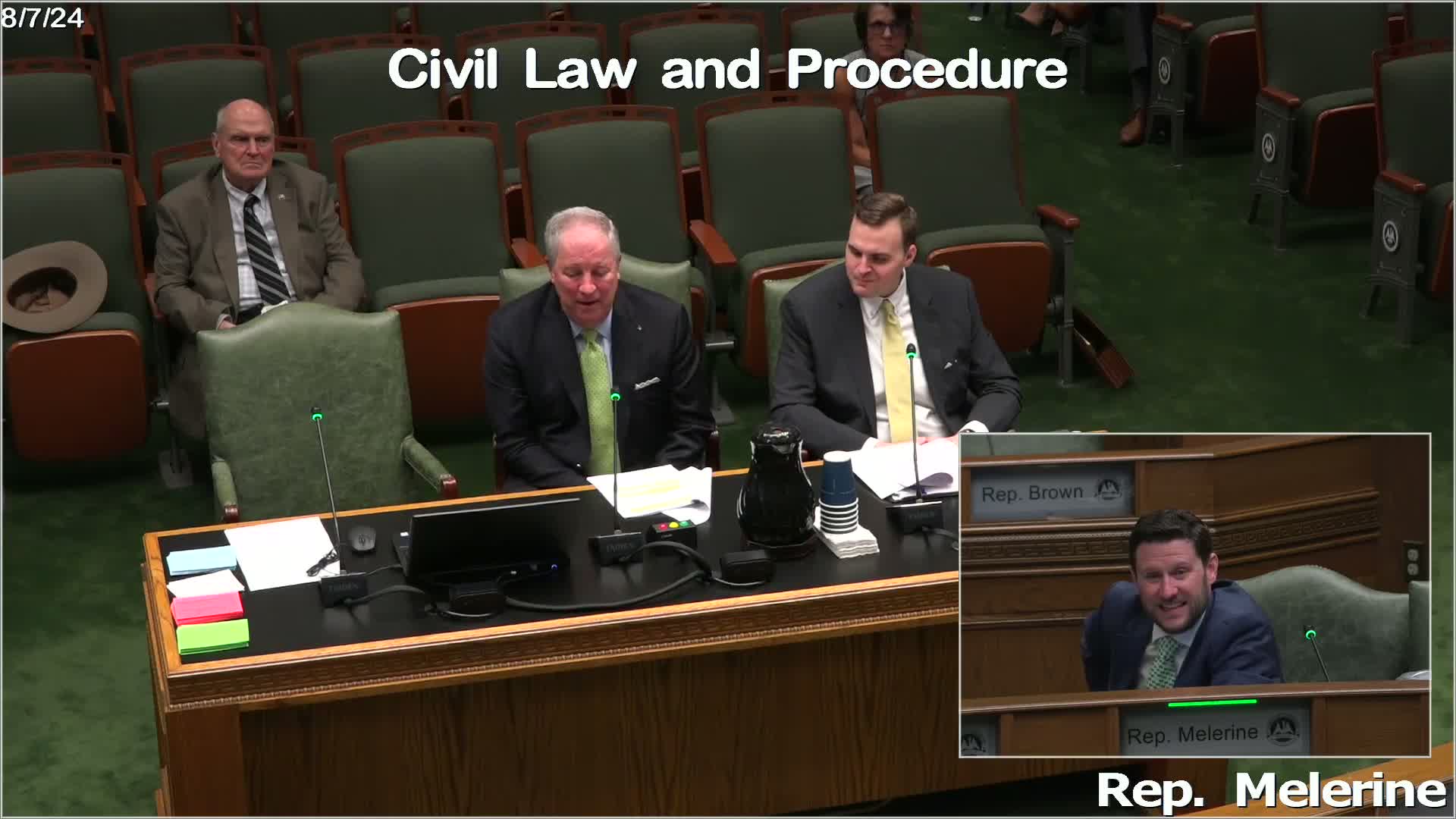Medical billing disparities spark urgent legal debate
August 07, 2024 | Civil Law and Procedure, HOUSE OF REPRESENTATIVES, Committees, Legislative, Louisiana
This article was created by AI summarizing key points discussed. AI makes mistakes, so for full details and context, please refer to the video of the full meeting. Please report any errors so we can fix them. Report an error »

In a recent government meeting, discussions centered around the evolving landscape of medical billing and insurance practices over the past three decades. A legal expert highlighted significant changes in the medical component of insurance cases, particularly the disparity between what insurance companies pay and the actual bills submitted by healthcare providers.
The expert noted that when they first began practicing law, the difference between a physician's bill and what insurance, such as Blue Cross, would cover was relatively minor—typically around 10 to 15%. However, this gap has widened dramatically, with current cases showing that bills submitted by plaintiffs can be 80 to 90% higher than what Blue Cross pays for the same procedures. This inflation in medical billing, the expert argued, is not merely a reflection of rising medical costs due to inflation but rather a significant distortion in the billing practices of healthcare providers.
The discussion also touched on the implications of having private insurance versus being uninsured. The expert illustrated this with a hypothetical scenario where two individuals suffer the same injury but have different insurance statuses. The insured individual faces a bill of $10,000, while the uninsured individual is billed significantly less, highlighting the financial burden placed on those with insurance. This raises questions about the fairness of the current system and whether having private insurance actually benefits the insurance carriers by saving them money in the long run.
Overall, the meeting underscored the complexities and challenges within the healthcare and insurance sectors, particularly regarding how medical billing practices have evolved and the impact on both patients and insurers.
The expert noted that when they first began practicing law, the difference between a physician's bill and what insurance, such as Blue Cross, would cover was relatively minor—typically around 10 to 15%. However, this gap has widened dramatically, with current cases showing that bills submitted by plaintiffs can be 80 to 90% higher than what Blue Cross pays for the same procedures. This inflation in medical billing, the expert argued, is not merely a reflection of rising medical costs due to inflation but rather a significant distortion in the billing practices of healthcare providers.
The discussion also touched on the implications of having private insurance versus being uninsured. The expert illustrated this with a hypothetical scenario where two individuals suffer the same injury but have different insurance statuses. The insured individual faces a bill of $10,000, while the uninsured individual is billed significantly less, highlighting the financial burden placed on those with insurance. This raises questions about the fairness of the current system and whether having private insurance actually benefits the insurance carriers by saving them money in the long run.
Overall, the meeting underscored the complexities and challenges within the healthcare and insurance sectors, particularly regarding how medical billing practices have evolved and the impact on both patients and insurers.
View full meeting
This article is based on a recent meeting—watch the full video and explore the complete transcript for deeper insights into the discussion.
View full meeting
